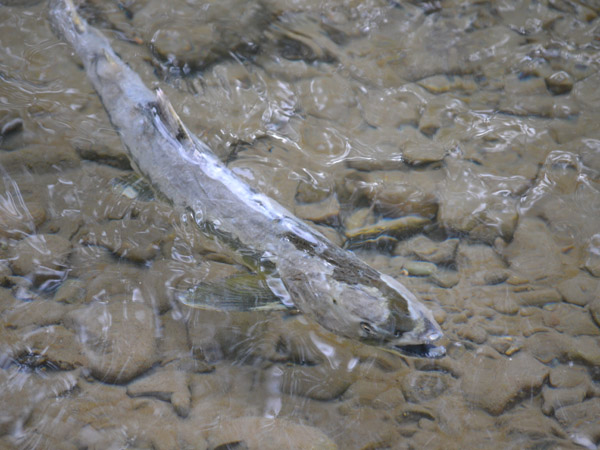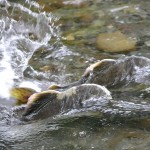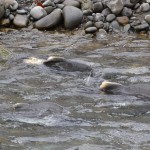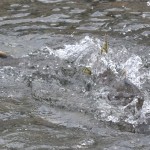Humpback or pink salmon have been swimming up the Dungeness River to spawn in record numbers this year. The director of our local Dungeness River Audubon Center has declared it the biggest run in 10 years and estimates that there may be a run of as many as 60,000 fish, possibly more.
The fish average about four to five pounds in size. The one pictured above was about 14-16 inches. They must swim through fast-running currents and expend a tremendous amount of energy to reach spots where they lay or fertilize eggs for the next generation of salmon.
Females lay about 3,000 eggs each and the males, called bucks, fertilize them as they swim over the eggs. The bucks spawn until they die and the river is littered with fish carcasses. It’s a credit to the relative health of local rivers that runs like this occur. Salmon need clean waters and gravel beds, with vegetation cover to keep the waters cool. Erosion from road and home-building can load waters with sediment and runoff from garden chemicals or livestock waste can pollute rivers and streams and devastate a fishery.



